
7 minute read
Adventures in the Arabian Gulf
A DIVE INTO MARINE CONSERVATION IN THE HOTTEST SEA IN THE WORLD GREEN TURTLE TAGGING IN ABU DHABI, UAE
FEATURE WINSTON COWIE
Advertisement
Fancy a dive in a living climate change laboratory? Come to Abu Dhabi, the capital of the United Arab Emirates, nestled on the shores of the Arabian Gulf. There is plenty to do and see, both above and below water.
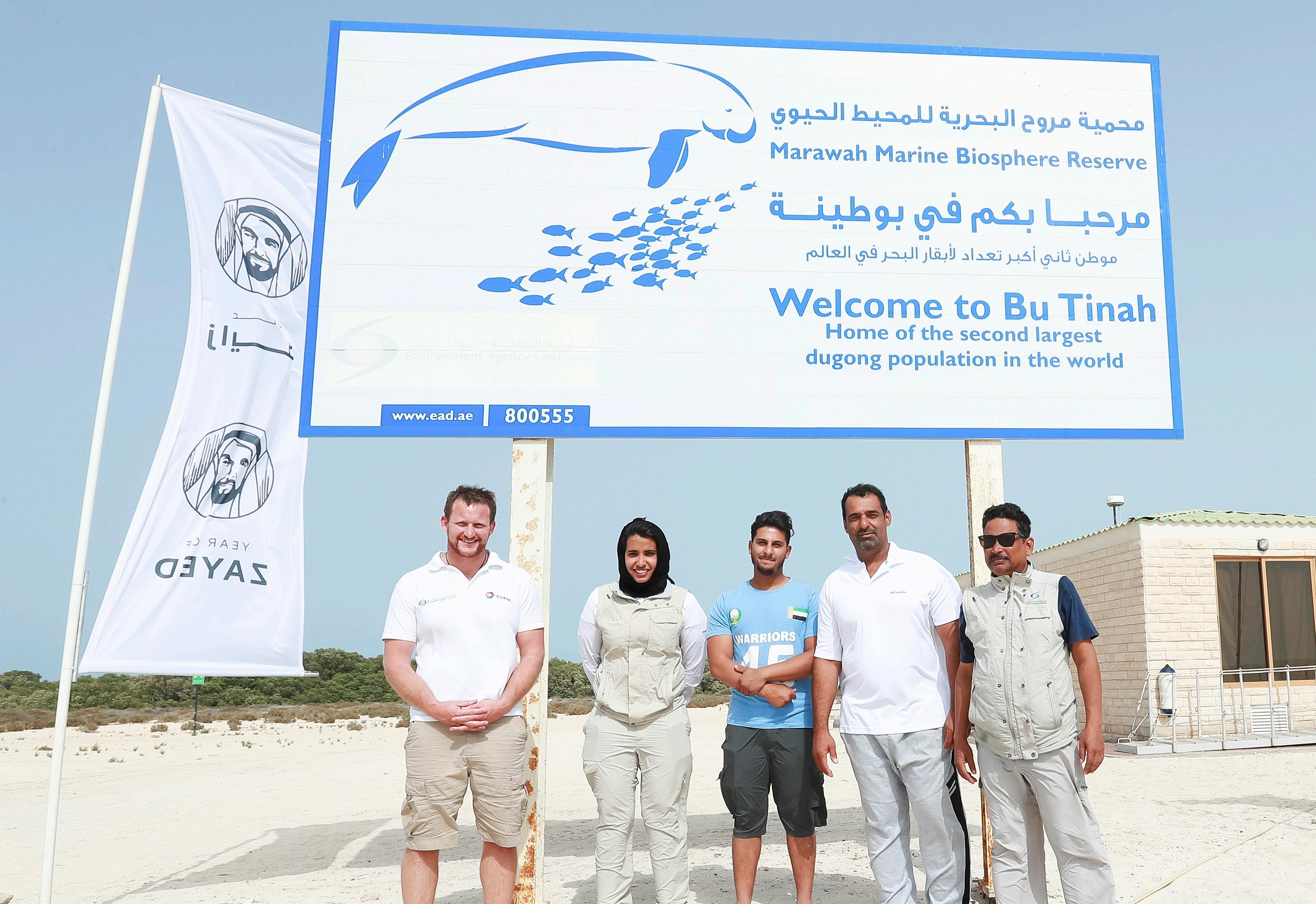
A FASCINATING MARINE ECOSYSTEM
Home to turtles, dugongs, dolphins, seabirds, and critical habitats – including coral reefs, seagrass and mangroves, the Arabian Gulf is the hottest sea in the world. It’s a place where we can study and see these unique sea creatures and habitats living on the edge, and they show us what is possible.
Imagine a sea where the temperatures change by 20˚C with the seasons, from 16˚C in winter, to 36˚C in summer. The coral has a special thermotolerant symbiotic algae, Symbiodinium thermophilus, enabling it to live in this extreme environment, many degrees above its normal range.
The bright lights of Dubai are only an hour down the road, and two hours further on, after a drive through the stunning Hajar Mountains, you are on the shores of the Arabian Sea, another unique and very different marine ecosystem facing the Indian Ocean.
The Arabian Gulf is a long way from the other Gulf most Kiwis know – the Hauraki Gulf and beaches of Tawharanui where I grew up. Yet for me, it is the Arabian Gulf where I spend most of my work-life and spare time. I have been living here for over 10 years now – working for one of the pioneering marine science and policy organisations in the region, the Environment Agency - Abu Dhabi.

Winston Cowie dives to capture a Green turtle using the rodeo method.
What do I do? I am the Marine Policy Manager at the agency – a portfolio that covers a sea area of around 48,000 square kilometres, equivalent to an area just under half the size of the North Island of New Zealand. This includes 2,000 km of coastline across 215 islands; globally significant biodiversity; industries such as oil, gas and shipping; a traditionally important fisheries sector; a burgeoning aquaculture sector; and a population of around 9.5 million from the wider UAE interacting with it.
Our organisation is 25 years old and we act as the referees between nature and the development needs of society. Our mission is to protect and conserve the environment for people’s well-being and a better life for all.
Contrary to the perception that, in the UAE ‘there is development everywhere’, with coastal developments popping up wherever it likes, in Abu Dhabi and the wider UAE, we have a 20 year old Environment Impact Assessment procedure. For any coastal development, marine baseline surveys need to be completed, impacts assessed and mitigation measures put in place. As an example, critical habitats – coral, seagrass and mangroves – are protected from development with an exception for critical national infrastructure projects. If this is the case, we have a mitigation hierarchy of assessing relocation options; redesign; rehabilitation and finally environmental compensation. To give an example, when Khalifa Por t was first designed – Abu Dhabi’s deep-water port – it would have detrimentally affected one of Abu Dhabi’s finest coral reefs, Ras Ghanada. When the marine baseline survey established that this was the case, the port’s location was moved 2 kilometres further down the coast so there was no impact on the reef.
In addition, representative marine habitat is protected in 13.9% of Abu Dhabi’s waters across six marine protected areas. This is well ahead of the 10 year old 10% of marine area global target that will expire this year, and a target that will likely be increased.
Having dived in New Zealand’s Goat Island a couple of months back while on holiday in New Zealand, I was struck by how successful and how well run it was, but I also reflected that only 0.37% of New Zealand’s marine environment is protected. But I digress.
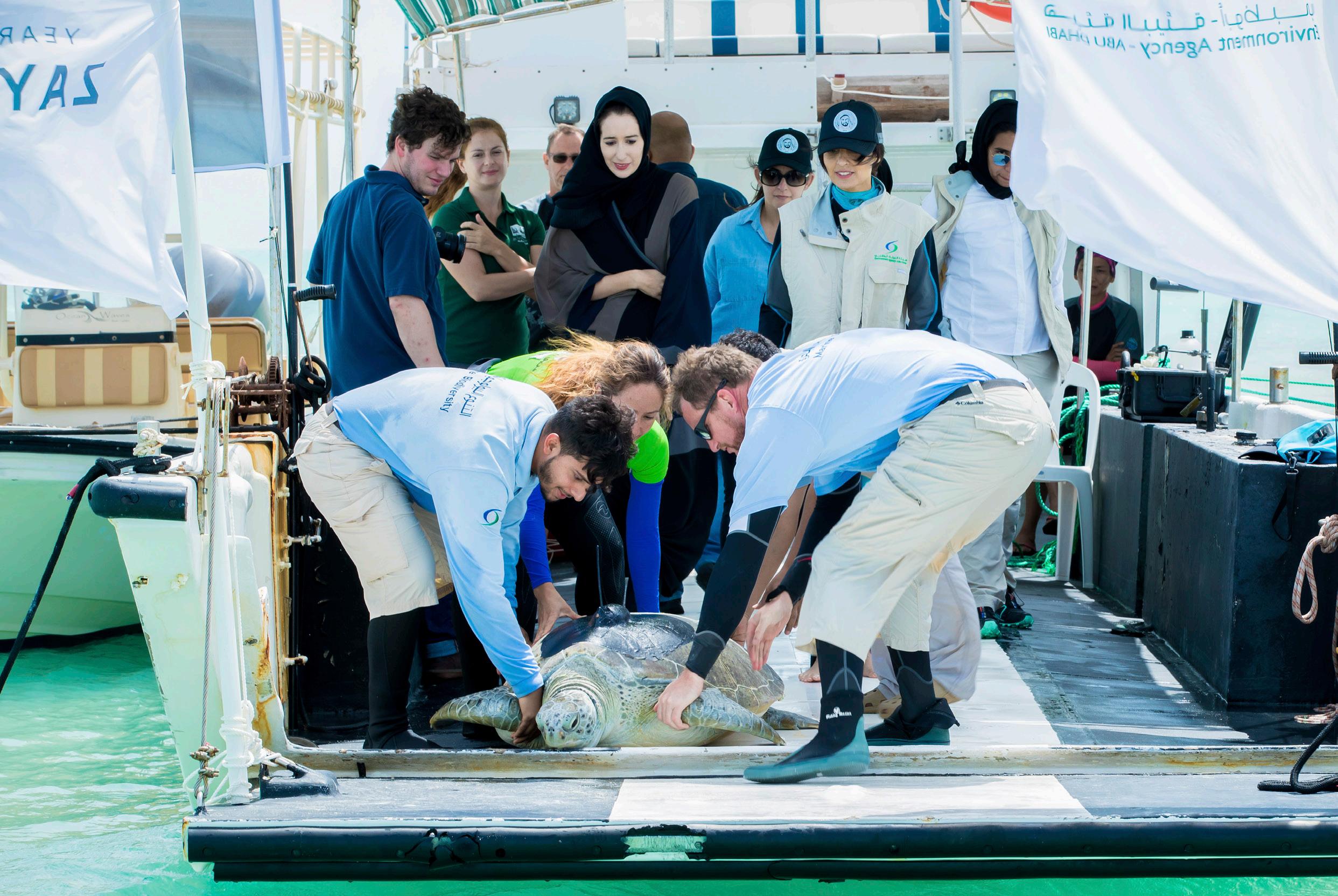
Releasing a tagged Green turtle.
OUR TURTLES
In Abu Dhabi you can find two ofthe world’s species of sea turtles. The critically endangered Hawksbill turtles, population around 1,500 which nest on 11 offshore islands, and the giant Green Turtles, a population of around 3,500. Green turtles are known to forage on the seagrass rich waters of Abu Dhabi’s Al Dhafra region, but were never known to nest there. In partnership with our local NGO, Emirates Nature-WWF, we established a project called the Gulf Green Turtle Project. We headed to Butinah Atoll, a stunning biodiversity hotspot with coral formations, extensive seagrass beds and mangroves. There were lots of Green turtles foraging on the nutritious seagrass in the shallow (less than 3 m) waters of the archipelago.
To catch the turtles – because they have never been recorded to nest on the beaches – we use the ‘turtle rodeo’ method. This involves slowly manoeuvring the boat up behind a turtle, taking a deep breath and jumping on top of them. These turtles are between 90 and 100 kg – that is about the same size as me. Rugby practice certainly came in handy. Typically, the turtles are about half a metre below the surface when you jump, so once you are in, you make sure to grab for the carapace. The turtle stops, and you have about half a second to manoeuvre your hands around the shell and put the turtle in an upright position.
Think a rugby tackle; being winded from hitting the ocean surface; a long breath hold; underwater; grab the turtle with instinct; not being able to see anything; adrenaline pumping; two front flippers slapping you in the face; seagrass; breathe. Quite the combo.
And the Green Turtles are strong – when they go, they go, and if they have the opportunity to pump those front flippers forward, they are gone. Your window to catch them is literally a couple of seconds.
Once you have them in the vertical position – easier said than done and a fair bit of exertion – we put the turtles onto the boat, assess if they are going to breed and nest that season, and if so, we put a satellite tag on them.
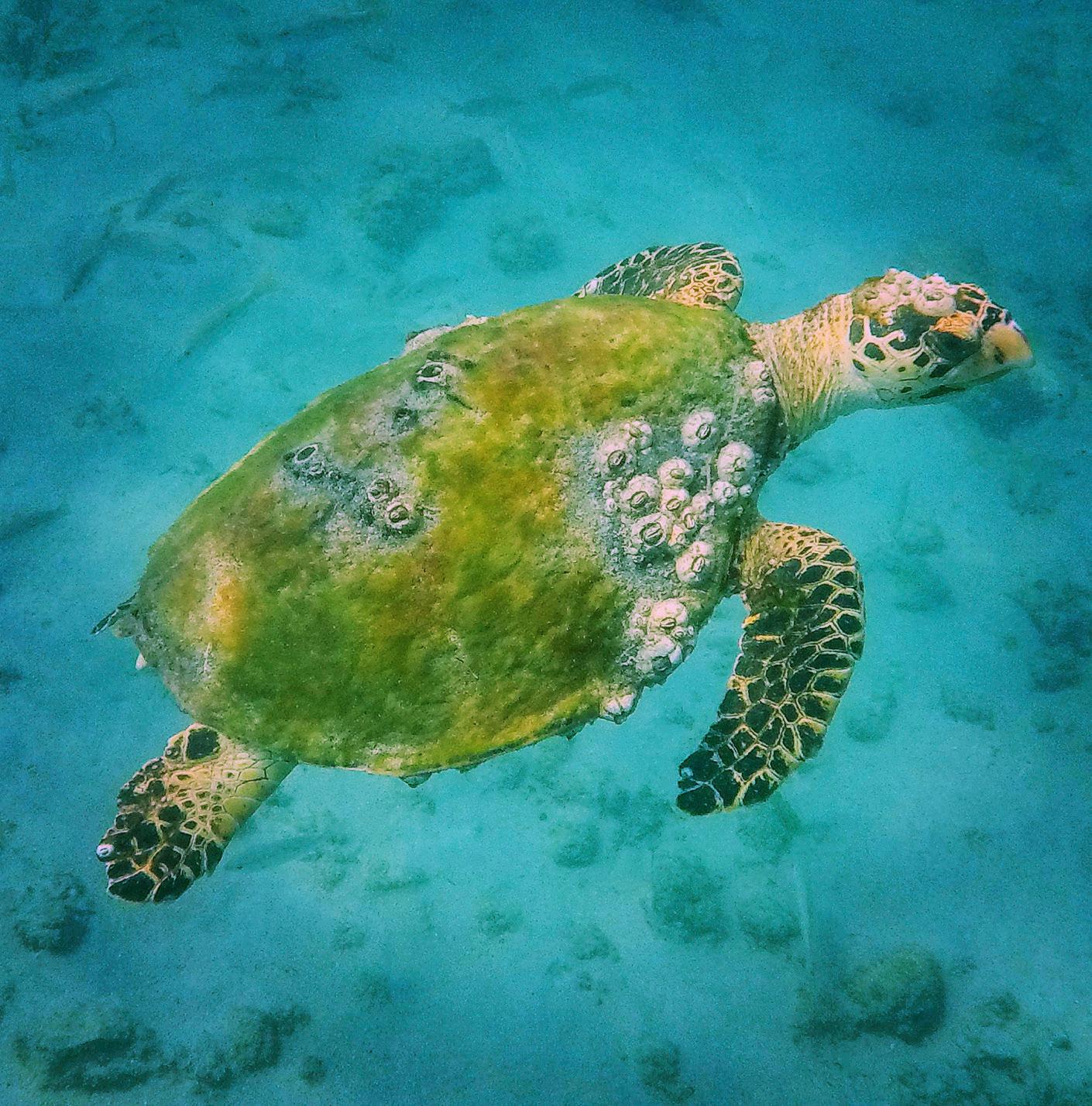
A Hawksbill turtle covered in algae and barnacles.
The results were mind blowing. Two of them – named Wisdom and Respect, after the values of His Highness Sheikh Zayed, the Founder of the UAE, and another called Yas, after the local Yas Mall (a valued sponsor) – travelled over 1,000 km all the way from Abu Dhabi, past Dubai, around the Straits of Hormuz, past Pakistan, then across the 3,000 km deep Sea of Oman, to Ras Al Hadd where they finally nested. Unbelievable. Over the six to eight months that the turtles were ‘at large’, they travelled an average of 7,000 km, including the return voyage to Butinah!
The findings were a first for science in the region with the policy implication that regional partners work together to ensure protection of Green Turtles, key habitat, foraging grounds and nesting beaches.
A proud team too!
The big picture takeaway – all biodiversity is connected. What is happening in one part of the world, will have an implication somewhere else. From our turtles in the sea, to the sky, the ArcticTern for example, flies from its breeding grounds each year in the Arctic, to the Antarctic and back again. That is a 90,000 km return ticket and ensures that these creatures see more sunshine than any other on the planet. Anthropogenic impacts such as climate change and plastics – it doesn’t matter which part of the planet – it will affect people and biodiversity, particularly our migratory species.
We need to get the local marine policy challenges right in our neck of the woods, which in turn will support global efforts. More marine reserves would help too!

An increase in Hawksbill turtle nests was recorded on Saadiyat Island. Maps recording the satellite tags from some of the turtles trips after their releases.
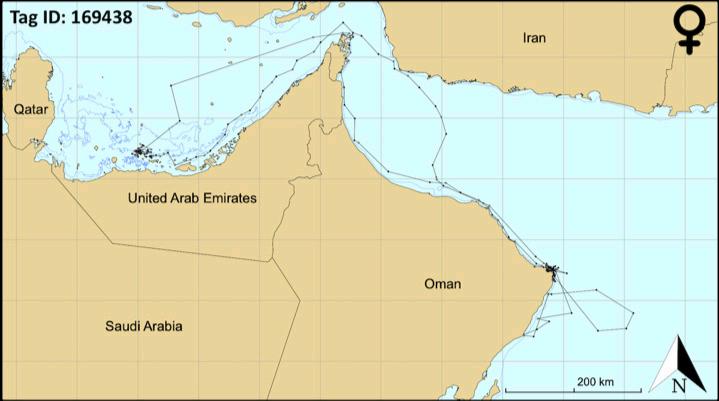
TURTLE: Wisdom

TURTLE: Yas
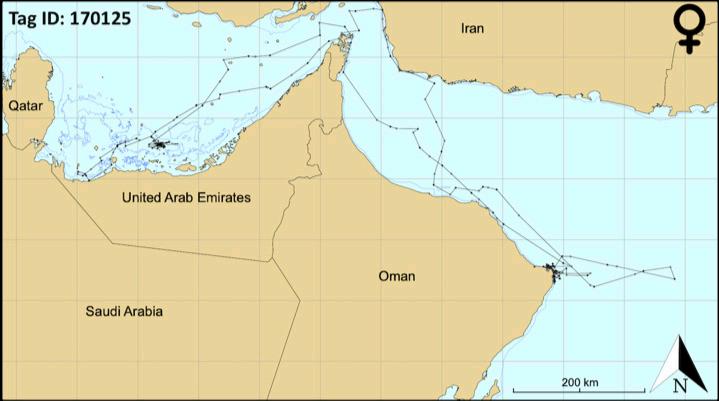
TURTLE: Respect
WINSTON COWIE
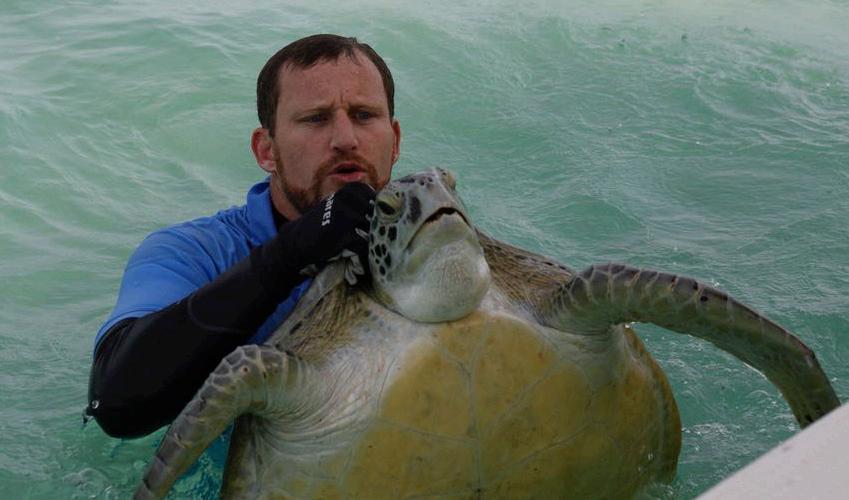
Winston Cowie is an award winning environmental policy manager, author and film maker from New Zealand, based in Abu Dhabi where he works as the Marine Policy Manager for the Environment Agency – Abu Dhabi. A fellow of the Royal Geographical Society, he has travelled to the seven continents and over 40 countries where he seeks to have a positive impact on nature and society through environmental policy, writing and film.He also has an interest in history having written the New Zealand Land Wars historical fiction series, and recently, the ‘Conquistador Puzzle Trail’ that proposes that the Portuguese and Spanish voyaged to Australia and New Zealand pre-Tasman.

